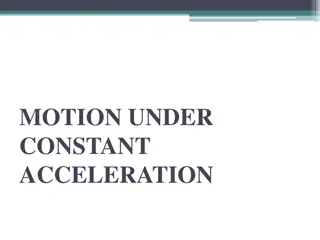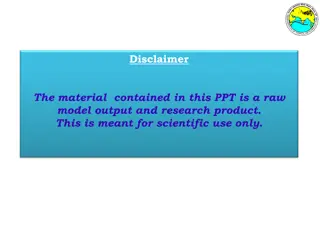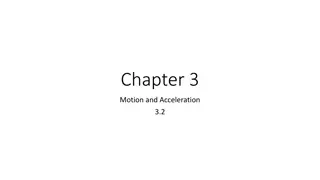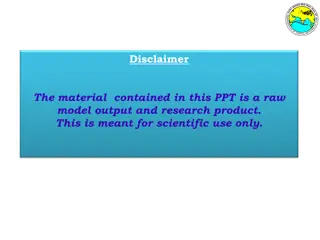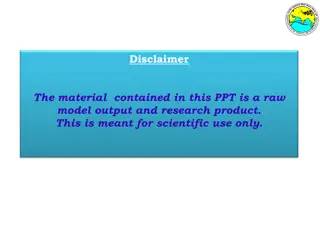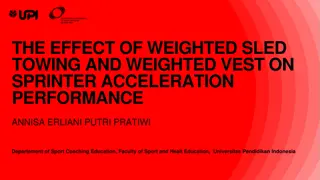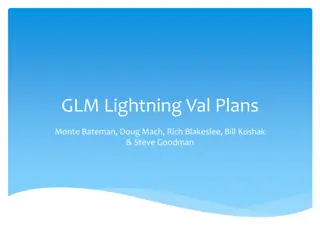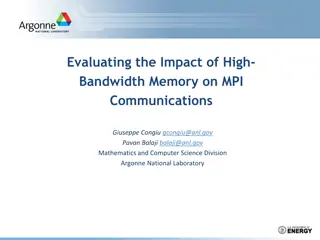
High-Bandwidth Memory Accelerator for Weather Prediction Modeling
"Explore the NERO high-bandwidth memory stencil accelerator for weather prediction modeling, aiming to mitigate performance bottlenecks and enhance energy efficiency in CPU+FPGA heterogeneous systems. Results show significant improvements in performance and energy consumption compared to traditional systems."
Download Presentation

Please find below an Image/Link to download the presentation.
The content on the website is provided AS IS for your information and personal use only. It may not be sold, licensed, or shared on other websites without obtaining consent from the author. If you encounter any issues during the download, it is possible that the publisher has removed the file from their server.
You are allowed to download the files provided on this website for personal or commercial use, subject to the condition that they are used lawfully. All files are the property of their respective owners.
The content on the website is provided AS IS for your information and personal use only. It may not be sold, licensed, or shared on other websites without obtaining consent from the author.
E N D
Presentation Transcript
NERO: A Near High-Bandwidth Memory Stencil Accelerator for Weather Prediction Modeling Gagandeep Singh, Dionysios Diamantopoulos, Christoph Hagleitner, Juan G mez-Luna, Sander Stuijk, Onur Mutlu, and Henk Corporaal 30th FPL, Sweden 31th August 2020
Stencil Computation in Weather Modeling COSMO (Consortium for Small-Scale Modeling) Around 80 complex stencils Horizontal diffusion Vertical advection Image Source: NVIDIA/MeteoSwiss: An example of COSMO simulation with cloud patterns over Switzerland and surrounding areas 2
Motivation and Goal Memory bound with limited performance and high energy consumption on IBM POWER9 CPU 104 Performance [Gflops] 103 POWER9 socket (486.4 Gflops/socket) 102 58.5 Gflops (64 threads) (64 threads) Vertical Advection Horizontal Diffusion 29.1 Gflops 101 100 10 1 101 100 102 Arithmetic Intensity [flop/byte] Goal: Mitigate the performance bottleneck of weather prediction kernels in an energy-efficient way Evaluate the use of near-memory acceleration using a FPGA+HBM connected through IBMCAPI2 (Coherent Accelerator Processor Interface) 3
NERO: A Near High-Bandwidth Memory Stencil Accelerator for Weather Prediction Modeling First near-HBM FPGA-based accelerator for representative kernels from a real-world weather prediction application Data-centric caching with precision-optimized tiling for a heterogeneous memory hierarchy In-depth scalability analysis for both DDR4 and HBM-based FPGA 4
Heterogeneous System: CPU+FPGA CAPI2 Source: AlphaData Source: IBM POWER9 AC922 HBM-based AD9H7 board We evaluate two POWER9+FPGA systems: 1. HBM-based AD9H7 board Xilinx Virtex Ultrascale+ XCVU37P-2 5
Heterogeneous System: CPU+FPGA CAPI2 Source: AlphaData Source: IBM POWER9 AC922 DDR4-based AD9V3 board We evaluate two POWER9+FPGA systems: 1. HBM-based AD9H7 board Xilinx Virtex Ultrascale+ XCVU37P-2 2. DDR4-based AD9V3 board Xilinx Virtex Ultrascale+ XCVU3P-2 5
Results NERO outperforms a 16-core IBM POWER9 system by 4.2x and 8.3x when running two compound stencils NERO reduces energy consumption by 22x and 29x NERO provides energy efficiency of 1.5 GFLOPS/Watt and 17.3 GFLOPS/Watt Hardware acceleration on an FPGA+HBM is a promising solution for weather modeling 6
NERO: A Near High-Bandwidth Memory Stencil Accelerator for Weather Prediction Modeling Gagandeep Singh, Dionysios Diamantopoulos, Christoph Hagleitner, Juan G mez-Luna, Sander Stuijk, Onur Mutlu, and Henk Corporaal 30th FPL, Sweden 31th August 2020






